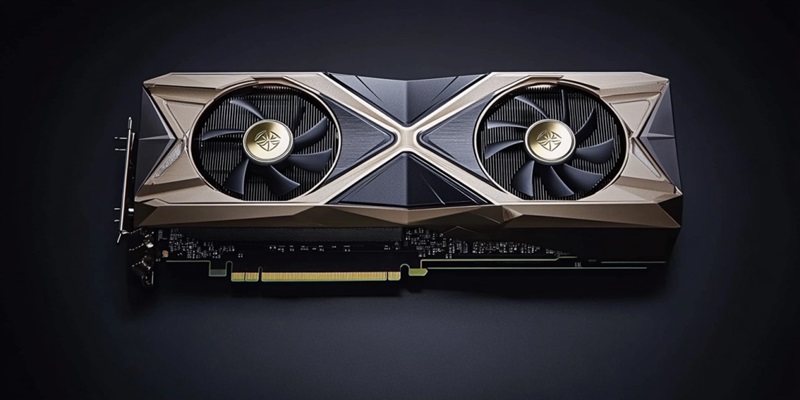MSI has made a compelling move in the motherboard arena by introducing dedicated 8-pin power connectors on its X870E series to effectively support next-generation NVIDIA RTX 50 GPUs. This significant upgrade aims to address burgeoning power requirements, especially in multi-GPU setups, and to ensure that advanced graphics performance remains uncompromised. Unveiled at Gamescom 2024, the new MPG X870E Carbon WIFI motherboard showcases not only the additional power connector but also a multitude of cutting-edge components designed to elevate gaming and professional applications. The advanced features include a robust 20-Phase VRM delivery system and a wealth of I/O ports like dual USB4 and dual 2.5/5.0 GbE LAN ports, indicating a significant leap in motherboard technology. With such high-end specifications, MSI’s new motherboards set the stage for a seamless and powerful computing experience, especially for users keen on leveraging next-gen GPU technologies.
One of the standout aspects of the MPG X870E Carbon WIFI motherboard is its infusion of user-friendly design elements such as the EZ-slot and EZ-release mechanisms. These features facilitate a simplified process for installing and removing M.2 and PCIe devices, making it easier for both seasoned and novice users to upgrade their systems. However, the core focus remains on the integration of the 8-pin power connector, which is pivotal for meeting the increased power demands of Gen5 lanes. This is particularly crucial for systems utilizing multiple next-gen NVIDIA RTX 50 GPUs. The anticipation surrounding the RTX 50 series points to an era of unprecedented graphical capabilities, and MSI is positioning its products to be at the forefront of this technological evolution.
Meeting Multi-GPU Power Demands
The decision to integrate 8-pin power connectors stems from the escalating energy requirements of multi-GPU configurations. While single GPUs from the forthcoming RTX 50 series are not expected to face severe power constraints, the scenario changes dramatically when operating two graphics cards in tandem. Such setups impose significant power demands on the PCIe lanes, necessitating an additional source of power to maintain optimal performance and system stability. The inclusion of these dedicated connectors ensures that the motherboards can handle the substantial electrical load, thereby preventing any potential bottlenecks or performance hiccups.
Other motherboard manufacturers are not far behind in adopting similar approaches. ASUS, for instance, has incorporated this 8-pin power connector in its high-end X870E ROG Crosshair HERO model. This shows a clear industry trend toward reinforcing power delivery mechanisms to support the evolving needs of next-gen GPUs. Nonetheless, brands like Gigabyte, ASRock, and Biostar have yet to announce comparable features in their motherboards, leaving MSI and ASUS as the primary innovators in this regard. As the September 30th launch date approaches, it will be interesting to see if other leading manufacturers follow suit, thereby solidifying this trend within the industry.
Comprehensive Integration Across Models
MSI has taken a significant step in the motherboard market by introducing dedicated 8-pin power connectors on its X870E series to robustly support next-generation NVIDIA RTX 50 GPUs. This significant enhancement aims to tackle soaring power requirements, especially in setups with multiple GPUs, ensuring that advanced graphics performance remains top-notch. Unveiled at Gamescom 2024, the new MPG X870E Carbon WIFI motherboard not only features an additional power connector but boasts a range of cutting-edge components designed to elevate both gaming and professional applications. Key features include a powerful 20-Phase VRM system and a variety of I/O ports, such as dual USB4 and dual 2.5/5.0 GbE LAN ports, indicating a significant technological leap.
One standout aspect is the user-friendly design, including EZ-slot and EZ-release mechanisms, simplifying the installation and removal of M.2 and PCIe devices. This makes it more accessible for both seasoned and novice users to upgrade their systems. However, the central focus remains on the 8-pin power connector, crucial for meeting the increased power demands of Gen5 lanes, especially for systems running multiple next-gen NVIDIA RTX 50 GPUs. With the anticipation surrounding the RTX 50 series pointing to unprecedented graphical capabilities, MSI is positioning its products at the forefront of this technological evolution.

